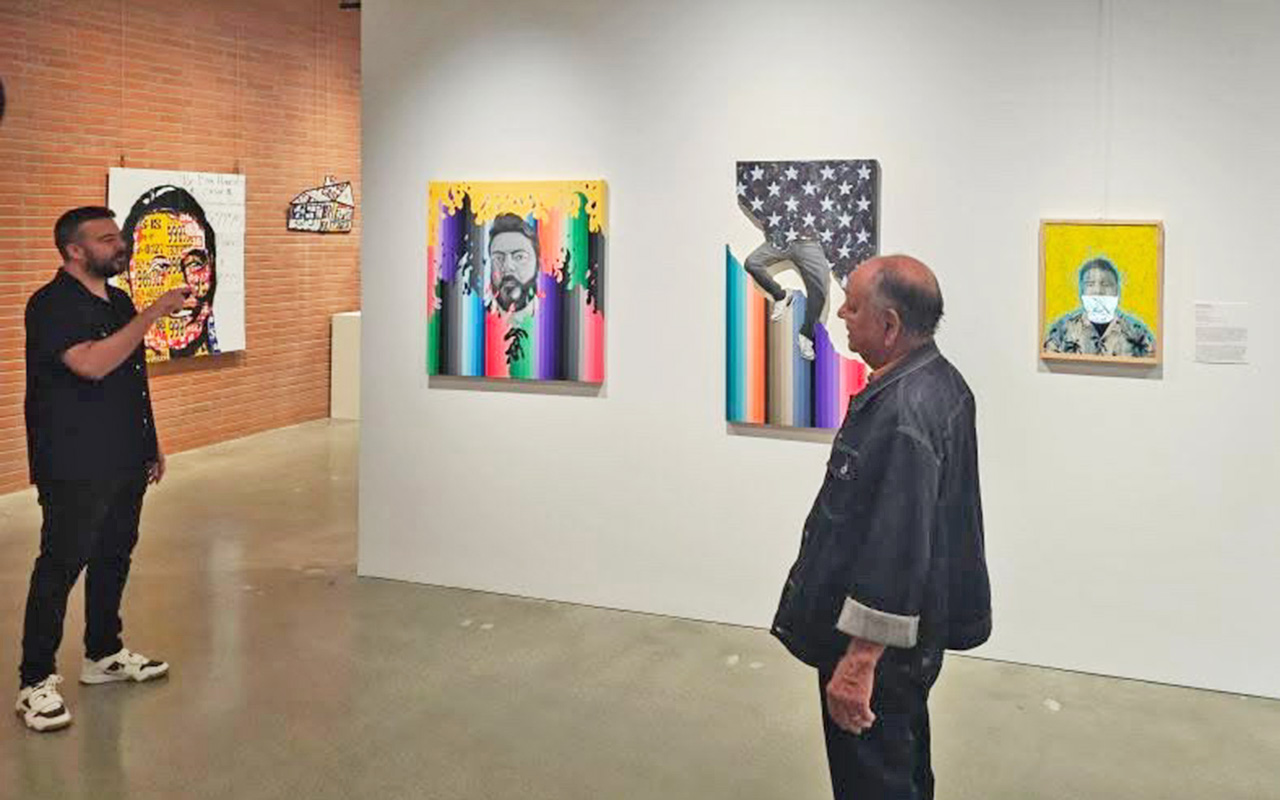
Alum Hardy’s postcard projects connect artists
By Michael Chesnick. May 3, 2023Postcards make Camden Hardy happy.
Designing and mailing them — and, of course, receiving them — helps him connect with other artists and stretch the limits of creativity, a process he says that “simply cannot exist in cyberspace.”
It’s why he started the Postcard Collective 13 years ago as a Master of Fine Arts student at the University of Arizona School of Art, and why he’s now leading a storytelling project in which his fellow Ph.D. students are making postcards for a class co-taught by Professor Ellen McMahon.

“Postcards promote an ethics of care that is often at odds with our culture of fast-paced, transactional consumption,” Hardy said.
“To create and send a postcard to another human being is to deliberately forge a personal connection without any guarantee of reciprocation,” he added. “To receive a postcard is to be reminded that someone cared enough to reach out. The relational dynamic between sender and recipient is a poignant reminder that our wellbeing is directly tied to that of others.”
McMahon is co-teaching the course, “Art Research in the Unruly World: Questions, Forms & Methods” (SCCT 510), through the SCCT Graduate Interdisciplinary Program — a class that brings together faculty and Ph.D. students like Hardy from different units across campus.
Hardy, a doctoral candidate in Applied Intercultural Arts Research (AIAR), gave each student in the class three stamped and addressed postcards with the prompts “space / place,” “time” and “identity” printed on the back. Students responded to the prompts on the front of the postcards in whatever form they desired — words, images, collages — and then dropped them in the mail.
Hardy collected the postcards to compose a visual narrative, which was on display in early May in the School of Art’s Visual Arts Graduate Research Lab, 1231 N. Fremont Ave. An opening reception was held May 2 in the lab’s Palo Verde graduate gallery.
McMahon is ecstatic about the collaboration with Hardy and other students from units such as the School of Art, Agriculture, Anthropology, Educational Psychology, East Asian Studies and AIAR. Most are minoring in Social Critical and Cultural Theory through the Graduate Interdisciplinary Program (GIDP).

She also worked with Hardy on her 2013 co-edited book “Ground/Water: The Art, Design and Science of a Dry River.” Beyond his personal project for the book, he provided beautiful images for the inside covers and the section dividers, McMahon said.
“Camden is soft-spoken and humble about his work,” she said. “He’s generous, persistent and dedicated to cultivating a creative community around him wherever he is.”
Hardy received his BA in Media & Theater Arts Photography from Montana State University before getting his MFA in 2012 at UArizona, where he started the Postcard Collective as an effort to maintain relationships with artists in different cities and regions.
“We hold seasonal postcard exchanges — about four per year — in which approximately 30 artists create and send postcards to each other; each participant receives a postcard from all other participants,” said Hardy about the exchanges, which are themed with prompts such as “The Sound that I Saw.”
For Hardy, the May exhibit at the School of Art brings back memories of the Postcard Collective’s first exchange in the graduate gallery toward the end of the Spring 2010 semester. It was busy time.

“Graduate school is a pressure cooker,” Hardy said. “A group of young artists suddenly find themselves surrounded by like-minded individuals, all with the shared goal of learning about themselves and how to make their work in the most authentic way possible, faculty and peers challenging them at every turn.
“Looking back, it is truly remarkable to consider what graduate school inspired us to make of ourselves.”
After getting his MFA, Hardy worked and taught at Southwest University of Visual Arts for the next eight years while the Postcard Collective gathered momentum. Hardy said postcards from the collection have been exhibited inside and outside the United States in a variety of contexts.
Hardy decided to return to UArizona as a doctoral student to “explore the ways in which communities of practice can facilitate and support unifying discourse among artists,” he said — and he’s using the “evolution of the Postcard Collective as a space for artists to conduct their own research and connect with each other.”
“Let’s be honest: we’re going through some dark times,” Hardy said. “Our culture has been flooded with divisive, toxic rhetoric that has pitted us all against each other.
“Art, on the other hand, can be the cure. It has the power to remind us of what it means to be human, and that we are all in this together.”







